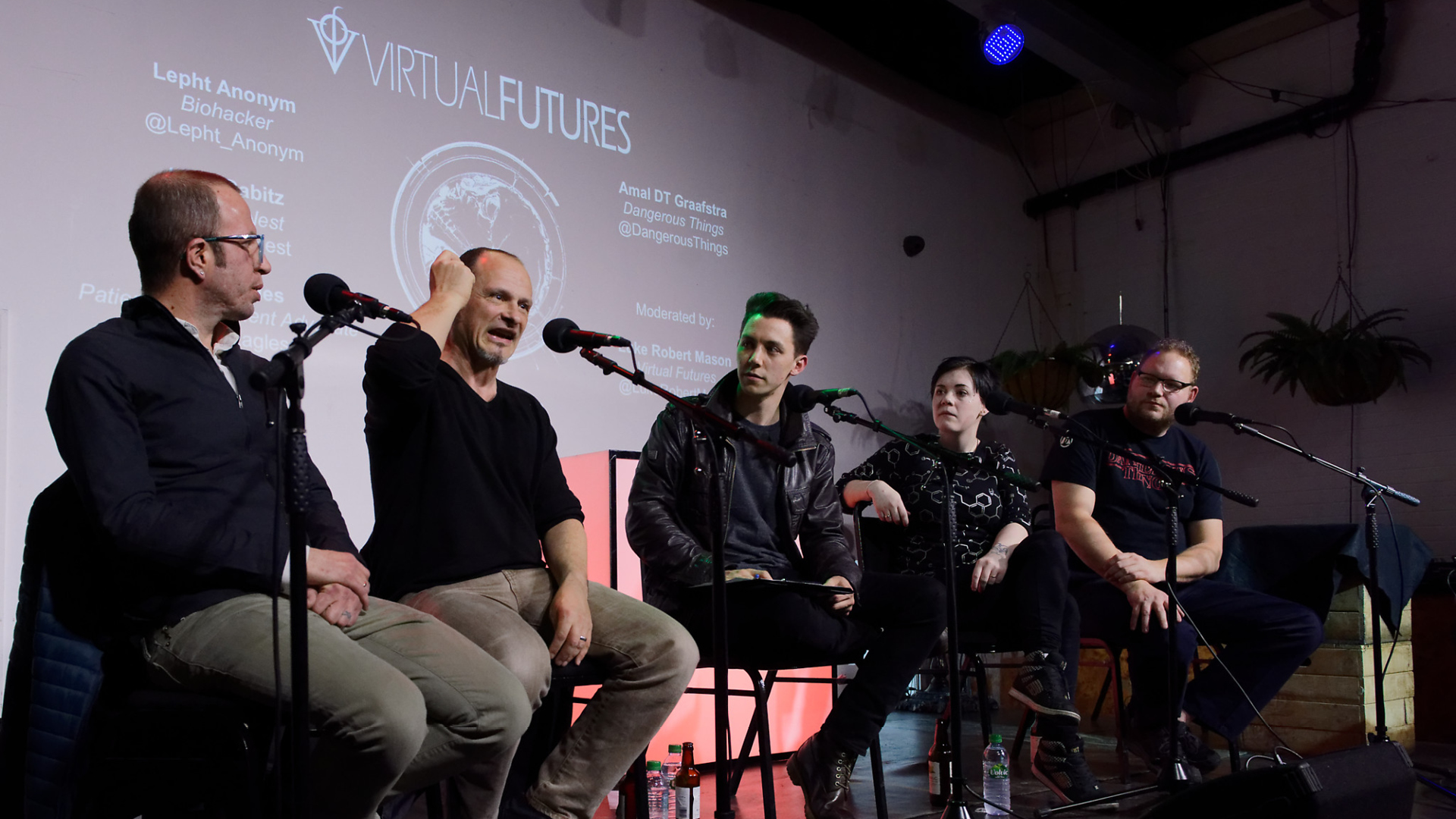6th February 2018
BlogMatt Eagles is our Head of Patient Engagement here at Havas Lynx. Matt recently sat on the panel of Biohacked Bodies – an event held by Virtual Futures focused on biohacking, implantable devices and human augmentation. In this blog, Matt shares his experience of sitting on the panel and meeting some extremely pioneering individuals.
I love meeting new people. Fact. I love learning about how people live their lives, what drives and motivates them to become better informed and how they challenge boundaries. This is how human evolution works right?
The collection of panellists, gathered together by the ever ebullient Luke Robert Mason, contained some remarkable characters – some may call them weird, dangerous and just plain unstable but to many including myself they are pioneering, trans-humans, so unbelievably dedicated to gaining knowledge that they are prepared to use their own bodies as a scientific canvas to enable future generations to experience life with senses and bodily sovereignty only previously seen on the silver screen.
Firstly there was Liviu Babitz, co-founder of Cyborgs Nest who invented Northsense, an artificial sense organ that vibrates every time he faces magnetic North. It is attached sub-dermally to his chest but to the layman it just looks like a giant computer chip that’s fallen down his jumper and simply attached itself like a giant futuristic limpet. Liviu explained how the vibrations help him to understand and make sense of reality and that it can enhance his memory and experience of his every day. At first I wasn’t convinced, but his argument is sound. Why do we explore the solar system? Why do we send probes to Mars? Answer, because humans have an insatiable desire for knowledge, to learn new things and experience life in a way perhaps we haven’t in the past.
Lepht Anonym was the only female on the panel. Her story is fascinating but not without controversy. On a personal level I warmed to her. Her honesty is refreshing and her visible delight at hearing the other panellists’ stories, infectious. Her scars however are very real. Experimenting on yourself to see how functional sub-dermal electronics is dangerous territory. Not only can it be injurious to your own health, it could get you in trouble with the law. Lepht is aware of the risks and explains that she carries out her surgeries in the most clinical conditions she can and doesn’t seek NHS assistance when things go wrong. She lifted her hand to show her finger where a bio-magnet had stopped working and started to degrade, meaning her finger now permanently has an unsightly lump on the end – it didn’t however dampen her desire to carry in her quest for knowledge and her smile remains as large as ever.
The fourth panellist was American bio-hacker Amal Graafstra, Founder and CEO of VivoKey Technologies. Amal added reality to the evening by inserting an RFID (Radio Frequency Identification Device) chip into a willing volunteer live on stage. It both captivated and shocked the audience in equal measures. Shocking, perhaps by the ease with which the procedure was carried out and captivating simply by the implications of what this would enable our volunteer to do once this device was linked to his computer and his biological and digital identities were merged cryptographically.
My own presence on the panel formed a medical therapy standpoint and was well received by a knowledgeable audience.
Of the many takeaways from this experience is this:-
Pioneers are prepared to take risks because they value better outcomes. Sure there will be ups and downs on the journey, but if you never set off in the first place who knows what riches you may miss out on.
Images courtesy of Graham Land
